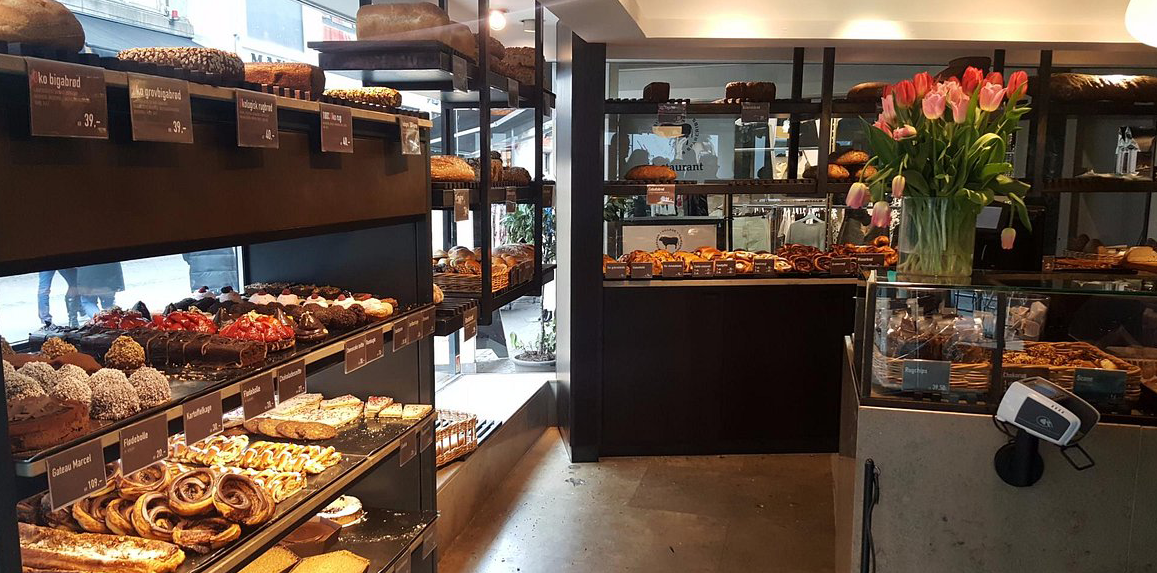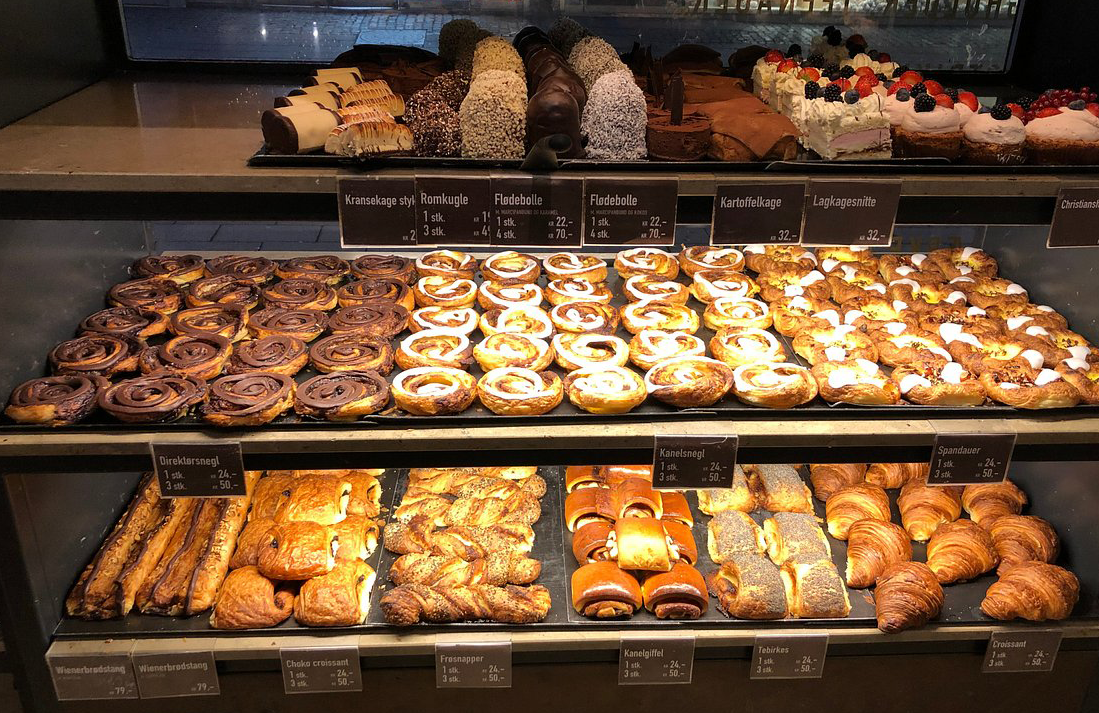Savoring Hygge 20 Delicious Reasons to Embrace Danish Cuisine in Your Life
In a world where culinary trends come and go faster than you can say "avocado toast," there's something refreshingly timeless about Danish cuisine. Rooted in tradition yet unafraid of innovation, the food of Denmark offers a unique blend of comfort, simplicity, and surprising depth of flavor. But why should you, dear reader, venture into the realm of smørrebrød and smørreost? Let's dive into 20 mouthwatering reasons that will have you saying "Velbekomme!" (Bon appétit!) in no time.
NUTRITION
Peter
9/28/202411 min read


Savoring Hygge: 20 Delicious Reasons to Embrace Danish Cuisine in Your Life
In a world where culinary trends come and go faster than you can say "avocado toast," there's something refreshingly timeless about Danish cuisine. Rooted in tradition yet unafraid of innovation, the food of Denmark offers a unique blend of comfort, simplicity, and surprising depth of flavor. But why should you, dear reader, venture into the realm of smørrebrød and smørreost? Let's dive into 20 mouthwatering reasons that will have you saying "Velbekomme!" (Bon appétit!) in no time.
1. The Art of Smørrebrød: Open-Faced Sandwich Heaven (covered in an earlier blog with recipes)
Imagine a canvas where bread is the medium and toppings are the paint. That's smørrebrød for you – the iconic Danish open-faced sandwich that elevates lunch to an art form. These aren't your average slapped-together sandwiches; they're meticulously crafted creations that can feature anything from herb-crusted roast beef to delicately smoked salmon, all artfully arranged on dense, dark rye bread.
What makes smørrebrød so special isn't just its visual appeal, but the way it encourages mindful eating. Each bite is a carefully considered combination of flavors and textures. It's a reminder that even a simple sandwich can be a celebration of good food and good company.
2. Hygge on a Plate: The Comfort of Danish Pastries
There's a reason why what we call "Danish pastries" are known simply as "wienerbrød" (Vienna bread) in Denmark. These buttery, flaky delights may have Austrian roots, but the Danes have perfected them into an art form that embodies the concept of hygge – that untranslatable feeling of coziness and contentment.
Picture this: It's a chilly Sunday morning, and you're curled up with a cup of coffee and a still-warm kanelsnegl (cinnamon roll). The scent of cinnamon and cardamom fills the air, and for a moment, all is right with the world. That's the power of Danish pastries – they're not just treats, they're edible comfort, perfect for creating moments of hygge in your daily life.
3. New Nordic Cuisine: A Culinary Revolution
In the early 2000s, a group of innovative chefs sparked a revolution that would put Danish cuisine on the global culinary map. The New Nordic Cuisine movement, spearheaded by restaurants like Noma, emphasized local, seasonal ingredients and traditional cooking methods reimagined for the modern palate.
This isn't just about fancy restaurants, though. The principles of New Nordic Cuisine have trickled down to home kitchens and casual eateries across Denmark. By embracing this philosophy, you're not just getting a tasty meal – you're participating in a sustainable, mindful approach to food that connects you to the land and the changing seasons.
4. Frikadeller: The Humble Meatball with a Big Heart (covered in an earlier blog with recipe)
At first glance, frikadeller might not seem like anything special. They're meatballs, after all – how exciting can they be? But these aren't just any meatballs. Made with a blend of pork and veal (though beef or chicken variations exist), and flavored with onions, eggs, milk, and a hint of nutmeg, frikadeller are the ultimate Danish comfort food.
Crispy on the outside, tender on the inside, and often served with creamy gravy, boiled potatoes, and pickled cucumbers, frikadeller represent the best of Danish home cooking. They're unpretentious, satisfying, and perfect for feeding a crowd – or just treating yourself to a cozy dinner at home.
5. Rye Bread: The Heart of Danish Cuisine
If there's one food that's central to Danish cuisine, it's rugbrød – dense, dark rye bread that's as nutritious as it is delicious. This isn't the light, airy bread you might be used to. Rugbrød is hearty, slightly sour, and packed with whole grains and seeds.
But don't let its intimidating appearance fool you. Once you've acquired a taste for rugbrød, you'll wonder how you ever lived without it. It's the perfect base for smørrebrød, of course, but it's also delicious toasted and topped with butter and cheese for a simple breakfast. Plus, its high fiber content and low glycemic index make it a healthier choice than many other bread options.


6. Smørreost: The Cheese Spread That Will Change Your Life
Forget everything you think you know about cheese spreads. Smørreost, which literally translates to "butter cheese," is in a league of its own. This creamy, tangy spread is made from aged cheese mixed with butter and yogurt, resulting in a flavor that's both familiar and utterly unique.
Spread it on rugbrød, use it as a dip for vegetables, or melt it over baked potatoes – smørreost is incredibly versatile. It's also a great introduction to Danish cheese culture, which goes far beyond the "Danish Blue" you might find in your local supermarket.
7. Fishcakes with a Twist: The Joy of Fiskefrikadeller
Denmark's long coastline means that seafood plays a starring role in its cuisine. Fiskefrikadeller, or fish cakes, are a delicious way to enjoy the bounty of the sea. Unlike their meatier cousins, fiskefrikadeller are light, delicate, and often flavored with fresh herbs.
These versatile little patties can be enjoyed hot or cold, making them perfect for picnics or packed lunches. Serve them with remoulade sauce (a Danish staple) and a crisp green salad for a meal that's both satisfying and refreshing.
8. The Sweet Life: Danish Licorice
If you think you don't like licorice, it's probably because you haven't tried Danish licorice. From the sweet to the salty, and even the fiery hot varieties, Danish licorice comes in a dizzying array of flavors and textures.
Embracing Danish licorice is like embarking on a flavor adventure. Start with the milder, sweet varieties and work your way up to the intense, salty lakrids that Danes adore. It's an acquired taste, to be sure, but one that's well worth acquiring.
9. Pølser: Not Your Average Hot Dog
Hot dogs might seem like a quintessentially American food, but the Danes have elevated this humble snack to an art form. Danish pølser, or sausages, are a street food staple, often served from colorful pølsevogn (sausage wagons) found throughout Danish cities.
What sets Danish hot dogs apart? It's all in the toppings. A classic Danish hot dog might come topped with ketchup, mustard, remoulade, crispy fried onions, and pickles, all carefully layered for the perfect balance of flavors and textures. It's a handheld meal that's perfect for a quick lunch or a late-night snack.
10. Kartofler: The Humble Potato, Elevated
Potatoes might not seem like the most exciting food, but in Danish cuisine, they're given the respect they deserve. From simple boiled new potatoes served with dill and butter to crispy, caramelized brunede kartofler (browned potatoes), Danish potato dishes are a testament to the magic that can happen when simple ingredients are treated with care.
One standout potato dish is kartoffelmos, or mashed potatoes. But this isn't just any mash – Danish kartoffelmos is incredibly creamy and often flavored with nutmeg for a subtle warmth that pairs perfectly with a variety of dishes.
11. Stegt Flæsk: Crispy Pork Perfection (covered in an earlier blog with recipe)
In 2014, stegt flæsk med persillesovs (crispy pork with parsley sauce) was voted the national dish of Denmark, and it's not hard to see why. This simple yet indulgent dish features slices of pork belly fried until golden and crispy, served with boiled potatoes and a creamy parsley sauce.
It's a dish that embodies the Danish love for simple, hearty food that's full of flavor. The contrast between the crispy pork and the smooth, herb-flecked sauce is truly something to behold. It's comfort food at its finest, perfect for cold winter nights or celebratory summer meals.
12. Leverpostej: The Pâté That Packs a Punch
Liver pâté might not sound appealing to everyone, but Danish leverpostej is in a class of its own. This rich, creamy spread is a staple in Danish households, often enjoyed as part of a traditional lunch or as a quick snack.
What makes leverpostej special is its versatility. It can be spread on rugbrød and topped with pickled cucumbers for a classic open-faced sandwich, or it can be baked and served warm with bacon and mushrooms for a more substantial meal. It's a testament to the Danish ability to transform humble ingredients into something truly delicious.
13. Æbleskiver: Pancake Balls of Joy (covered in an earlier blog with recipe)
Imagine if pancakes and doughnuts had a delicious Danish baby – that's æbleskiver for you. These spherical pancakes are traditionally served during the Christmas season, but they're so good that Danes (and Danish food enthusiasts) enjoy them year-round.
Cooked in a special pan with half-spherical molds, æbleskiver are crispy on the outside and fluffy on the inside. They're often served with jam and powdered sugar, making them a perfect treat for breakfast or as an afternoon snack with coffee. Making æbleskiver is also a social activity, with family and friends often gathering to cook and enjoy them together.
14. Dansk Bøfsandwich: The Burger's Sophisticated Cousin
While it might look like a simple burger at first glance, the dansk bøfsandwich (Danish beef sandwich) is a culinary experience all its own. It starts with a beef patty, but that's where the similarities to a regular burger end. The patty is typically served on a circular bun with a variety of toppings that might include remoulade, crispy fried onions, pickled cucumbers, and beetroot slices.
What really sets the dansk bøfsandwich apart is the gravy. Yes, you read that right – this sandwich is often served with a ladle of rich, beefy gravy poured right over the top. It's messy, it's indulgent, and it's absolutely delicious.
15. Flødeboller: Chocolate-Covered Marshmallow Bliss
If you have a sweet tooth, Danish flødeboller will be your new obsession. These chocolate-covered marshmallow treats are like a sophisticated version of the marshmallow cookies you might remember from childhood.
A typical flødebolle consists of a wafer or marzipan base topped with a fluffy marshmallow-like filling and covered in chocolate. But many artisanal producers take them to the next level with gourmet flavors like passionfruit, licorice, or sea buckthorn. They're the perfect accompaniment to a cup of coffee or tea, and they make lovely gifts too.


16. Smørrebrød: A Canvas for Creativity (covered in an earlier blog with recipe)
We've mentioned smørrebrød before, but it's worth revisiting because of its incredible versatility. While there are classic combinations that you'll find in any Danish lunch restaurant, smørrebrød is also a perfect canvas for culinary creativity.
By embracing the art of smørrebrød, you're not just enjoying a delicious meal – you're participating in a Danish tradition that encourages mindful eating and appreciation for beautiful food. It's a chance to play with flavors and textures, to make every lunch a small work of art.
17. Snaps: The Spirit of Danish Hospitality
No discussion of Danish cuisine would be complete without mentioning snaps, the fiery aquavit that's an essential part of many Danish celebrations. Flavored with caraway, dill, or other herbs and spices, snaps is traditionally drunk as an accompaniment to hearty foods like smørrebrød or at holiday meals.
But snaps is more than just a drink – it's a social lubricant, a way to mark special occasions, and a testament to the Danish love of conviviality. Learning to appreciate snaps (and the accompanying drinking songs) is a delightful way to immerse yourself in Danish culture.
18. Røget Laks: Smoked Salmon Perfection
Given Denmark's coastal geography, it's no surprise that fish plays a significant role in Danish cuisine. But Danish smoked salmon, or røget laks, is in a league of its own. Whether cold-smoked for a silky texture or hot-smoked for a flakier finish, Danish salmon is prized for its delicate flavor and perfect balance of smokiness.
Enjoy it on rugbrød with a squeeze of lemon, use it to top blinis for a fancy appetizer, or incorporate it into a creamy pasta dish. However you choose to use it, Danish smoked salmon is a luxurious treat that's well worth seeking out.
19. Koldskål: Summer in a Bowl
When the weather turns warm, Danes reach for koldskål, a cold buttermilk soup that's the essence of Danish summer. This refreshing dish is typically flavored with lemon and vanilla and served with small butter cookies called kammerjunker.
Koldskål is more than just a tasty treat – it's a cultural phenomenon. Sales of koldskål spike dramatically during the summer months, and many Danes have fond childhood memories of enjoying this cool, creamy dish on hot days. Embracing koldskål means embracing the Danish approach to summer – laid-back, indulgent, and full of simple pleasures.
20. Julefrokost: The Ultimate Food Experience
Our final reason to embrace Danish cuisine isn't a single dish, but rather an entire tradition: the julefrokost, or Christmas lunch. This epic meal, which often lasts for hours, is a showcase of the best that Danish cuisine has to offer.
A typical julefrokost might include herring prepared in various ways, smoked salmon, leverpostej, frikadeller, roast pork with crackling, caramelized potatoes, and a variety of cheeses, all washed down with beer and snaps. It's a feast for the senses, a celebration of abundance, and a perfect example of the Danish ability to turn a meal into a joyous, day-long event.
By embracing the tradition of julefrokost – even if you celebrate it at a different time of year – you're not just enjoying delicious food. You're participating in a cultural tradition that values togetherness, indulgence, and the pure pleasure of a long, leisurely meal shared with loved ones.
In conclusion, Danish cuisine offers far more than just tasty food – it provides a window into a culture that values simplicity, quality ingredients, and the joy of sharing a meal with others. From the humble smørrebrød to the epic julefrokost, Danish food culture is all about creating moments of hygge, of comfort and conviviality.
By embracing Danish cuisine, you're not just adding new flavors to your palate. You're adopting a philosophy that sees food as a source of joy, a way to connect with others, and a celebration of life's simple pleasures. So why not start your Danish food journey today? Your taste buds – and your soul – will thank you.
Velbekomme!


Welcome to my world of creative expression! Based in the heart of Copenhagen but reaching customers worldwide, I bring over 500 unique designs to life on t-shirts, hoodies, mugs, and more. Passionate about graphic design, I combine Nordic inspiration with global appeal to offer stylish, high-quality merchandise through Shopify/Printify and Teepublic. Whether you’re looking for a cozy sweatshirt or a personalized Coffee Mug, each product is crafted to make everyday moments extraordinary.
Explore, express, and enjoy!
Advertisment for our Merchndise Shop












